

The vibrant green powdered tea is one of Japan’s most loved treasures. It has captured the hearts of tea enthusiasts and health-conscious individuals alike. In this Q&A, we dive deep into matcha, from its production to diverse applications in food and skincare.
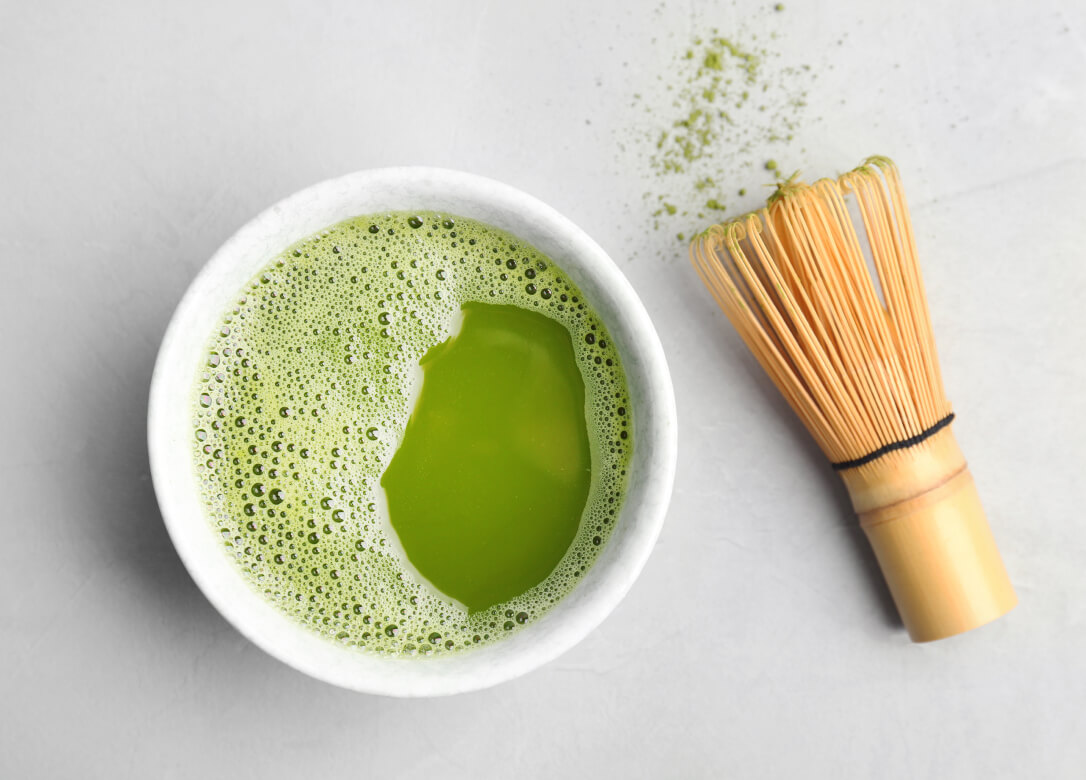
Finely ground powdered green tea that originated in China but became a staple of Japanese tea culture. It is cultivated from shade-grown tea plants known as Camellia Sinensis.
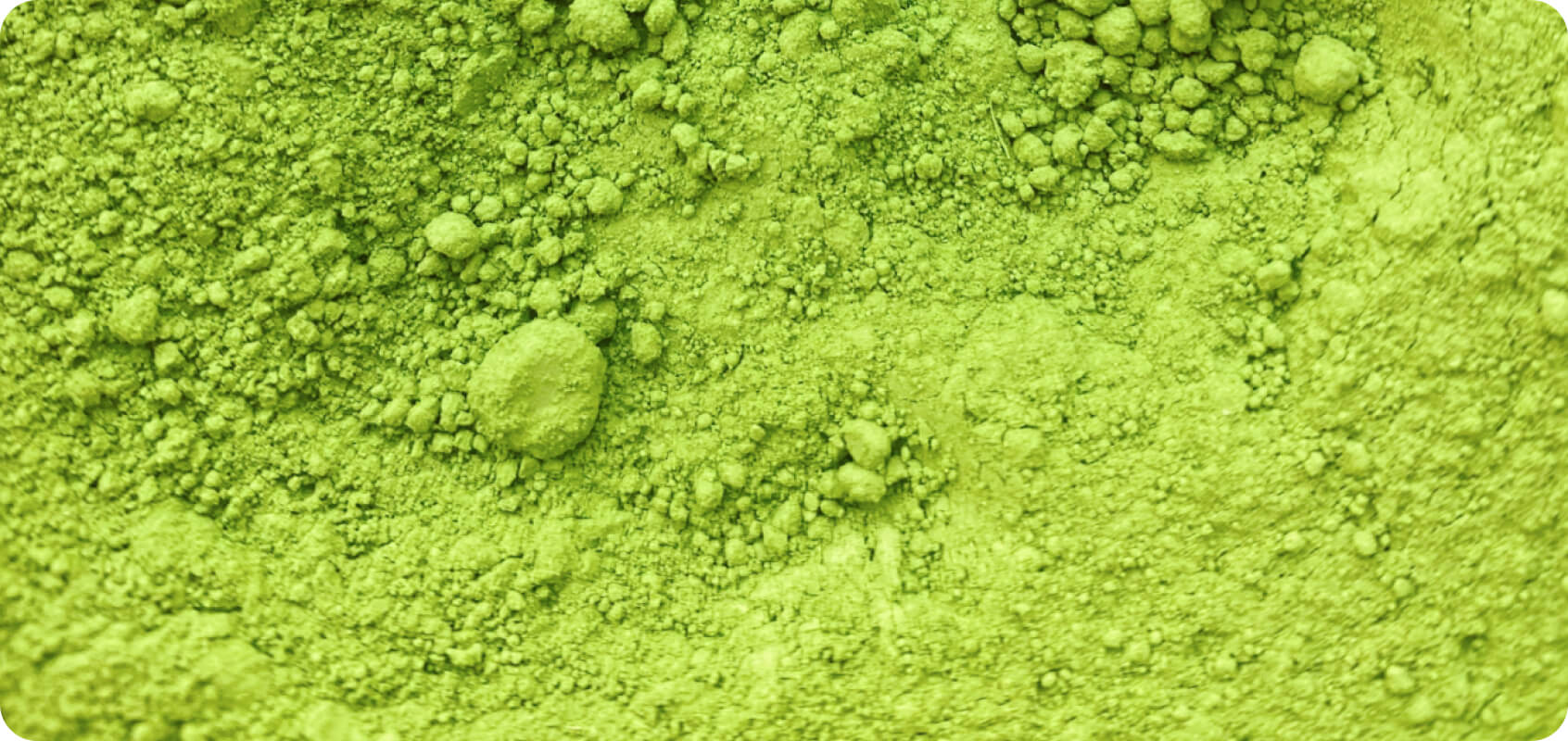
The meticulous production process achieves the distinctive, vibrant green colour and rich, umami flavour of this tea. The farmers shade the tea plants from sunlight for about 20-30 days before harvesting. This boosts chlorophyll production and enhances the amino acid content. The handpicked leaves are then carefully steamed to halt fermentation, dried, and stone-ground into a fine powder.
Matcha production is a labour-intensive and precise process that emphasises quality. Tea plant shading stimulates the production of amino acids, particularly L-theanine, responsible for its unique umami flavour. Handpicking young leaves ensures tenderness, and the stone-grinding process retains the tea’s natural flavours and nutrients.
Matcha has a distinct and unique flavour profile that can be described as rich, savoury, and slightly bitter. It is known for its umami flavour, which gives matcha a depth and complexity that sets it apart from other teas. In addition to its savoury and bitter notes, matcha can also have a natural sweetness. This sweetness helps balance the overall flavour profile.
Depending on the quality of the matcha and how it's prepared, there may be a hint of bitterness. Higher-quality ceremonial-grade matcha is generally smoother and less bitter than lower-grade culinary matcha.
Beyond its delightful taste, matcha’s health benefits are countless. It is a nutritional powerhouse. It’s rich in antioxidants, particularly catechins like EGCG, known for their cancer-fighting properties.
Matcha also contains L-theanine, an amino acid that promotes relaxation and alertness, providing a balanced energy boost. Additionally, matcha is renowned for boosting metabolism, aiding concentration, and promoting overall well-being.
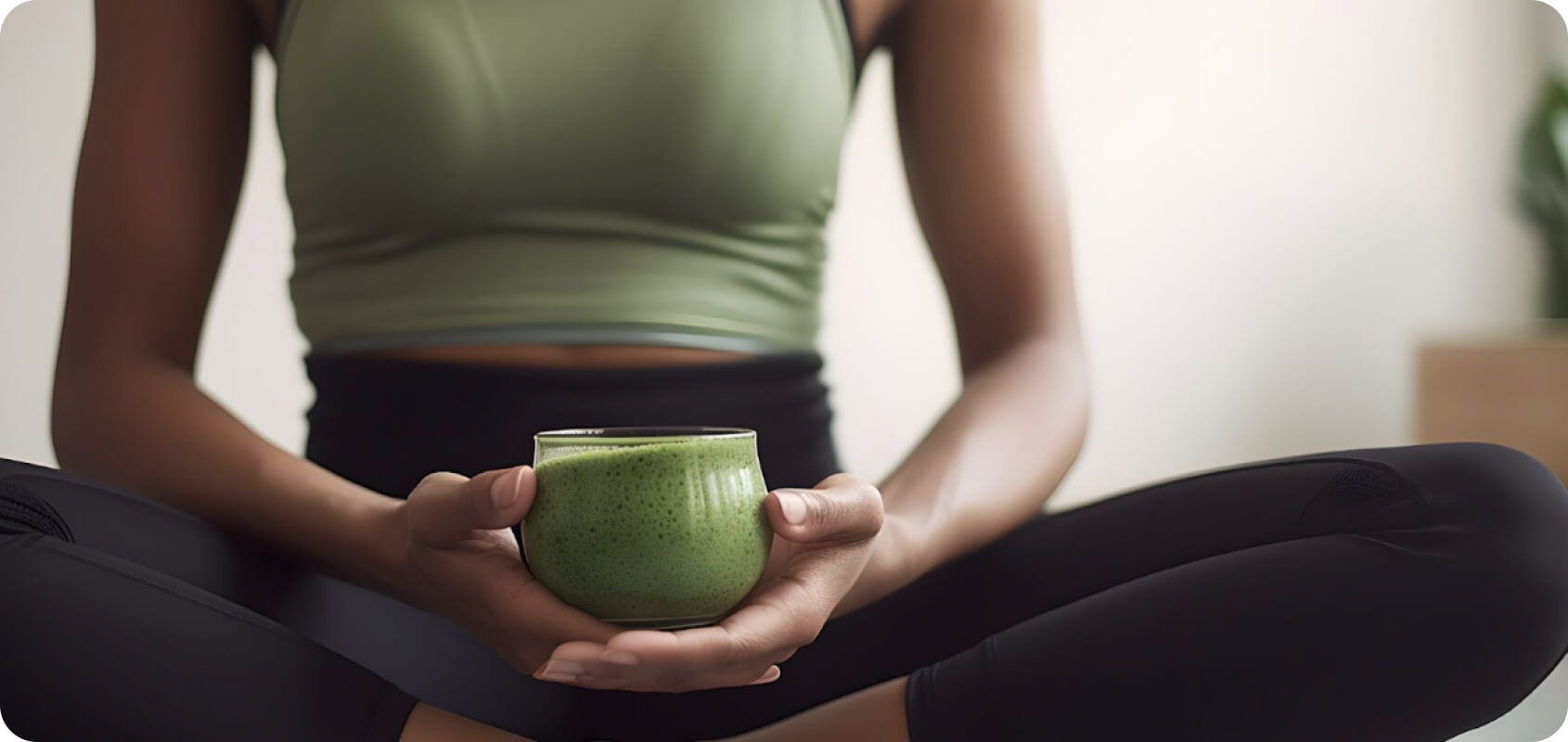
For a detailed exploration, check out our article on the 10 Benefits of Drinking Japanese Tea.
While both come from the Camellia sinensis plant, matcha is a type of powdered green tea made from shade-grown tea leaves. The preparation and consumption of matcha differ significantly from traditional green tea. Since the leaves are ground into a powder, you consume the whole plant. This makes matcha more powerful and packed with more nutrients and benefits than regular tea.
‘Ceremonial grade’ is the highest quality powder used for traditional Japanese tea ceremonies. It symbolises purity and excellence.
It boasts a vibrant green colour, a subtly sweet flavour, and a smooth texture. The leaves used for ceremonial grade matcha are carefully selected. Removing stems and veins results in a fine powder that dissolves seamlessly in water. The preparation of this grade reflects the reverence and respect accorded to matcha in Japanese culture.
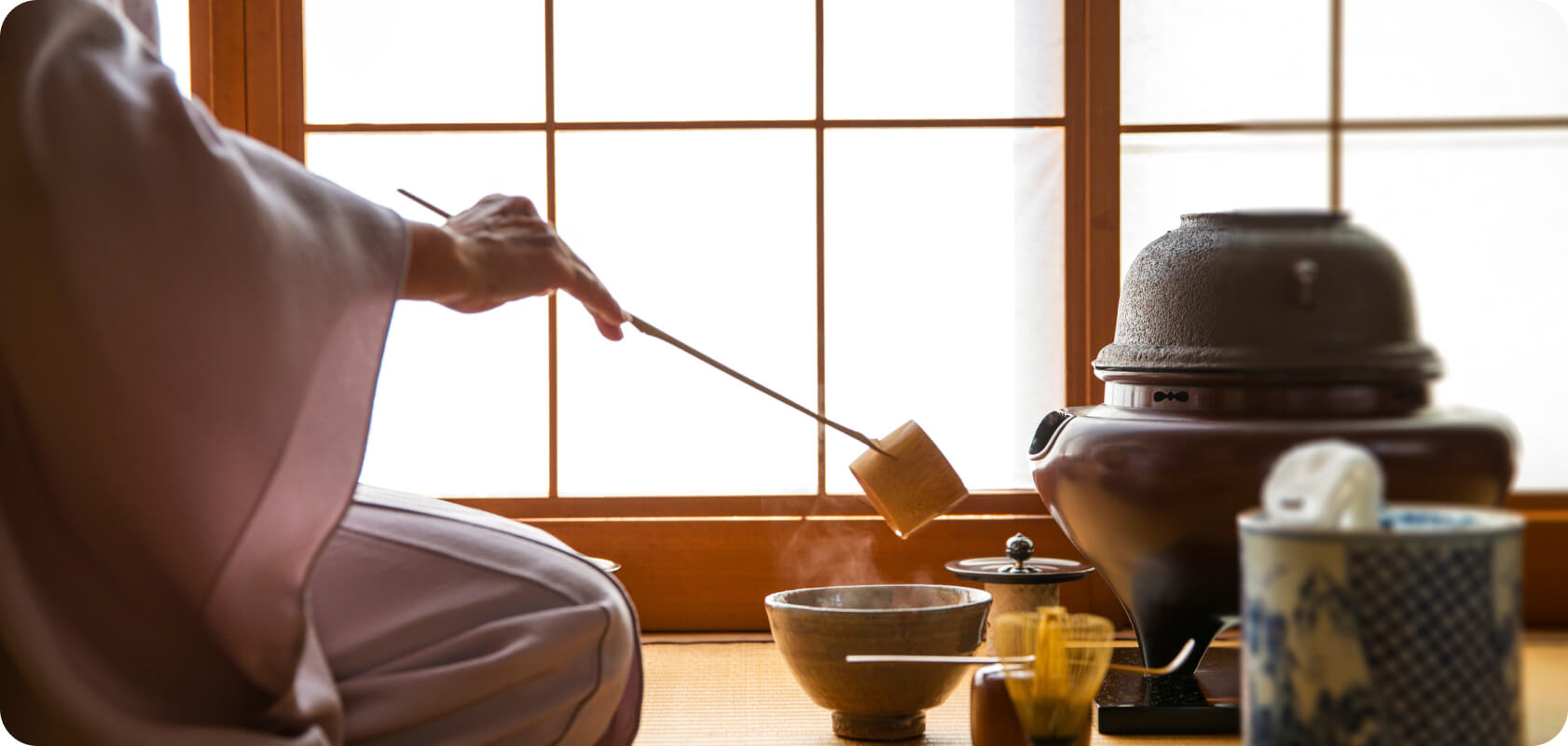
Read our blog on the Japanese tea ceremony to learn more about this century-old artisan practic.
Yes, matcha is exclusively available in powdered form. Unlike other teas, matcha drinkers ingest the entire tea leaf. This unique feature makes it a vital source of nutrients, giving more antioxidants, vitamins, and minerals than regular teas.
Please refer to our ‘About Japanese Tea’ page for more information on other Japanese tea varieties.
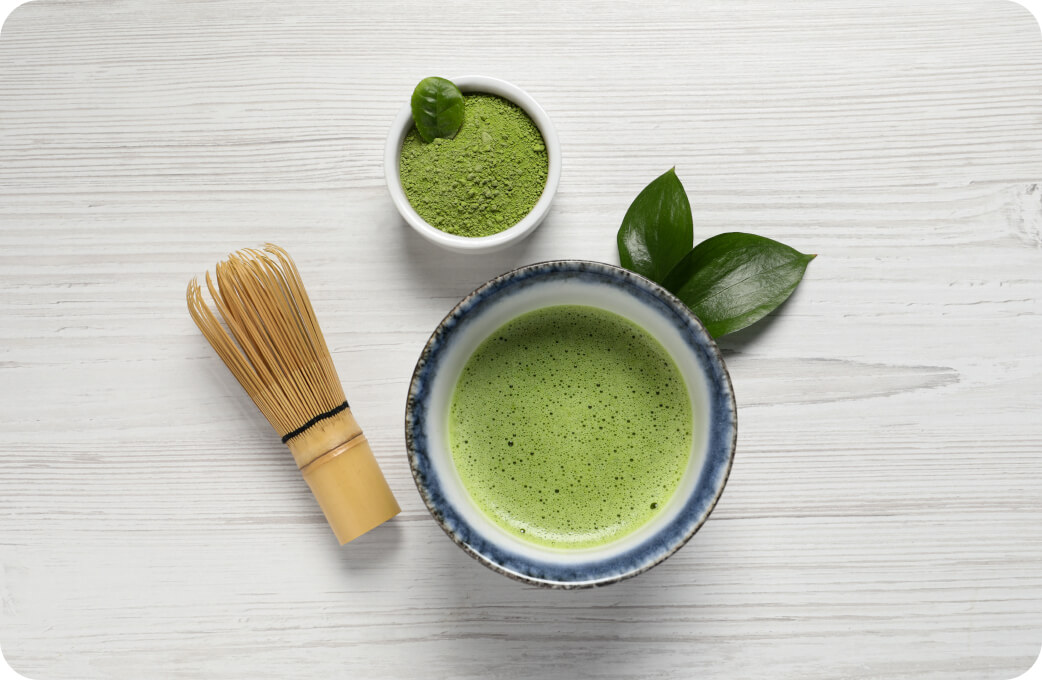
To experience the true essence of Japanese green tea, it’s crucial to source it from reputable suppliers. Preferably those directly connected to Japanese tea producers.
Find out where to buyMatcha’s versatility extends beyond beverages. You can incorporate it into many culinary creations, including lattes, smoothies, desserts, and skincare products. Its rich, earthy flavour adds depth to recipes, while its antioxidants benefit the skin when applied topically.
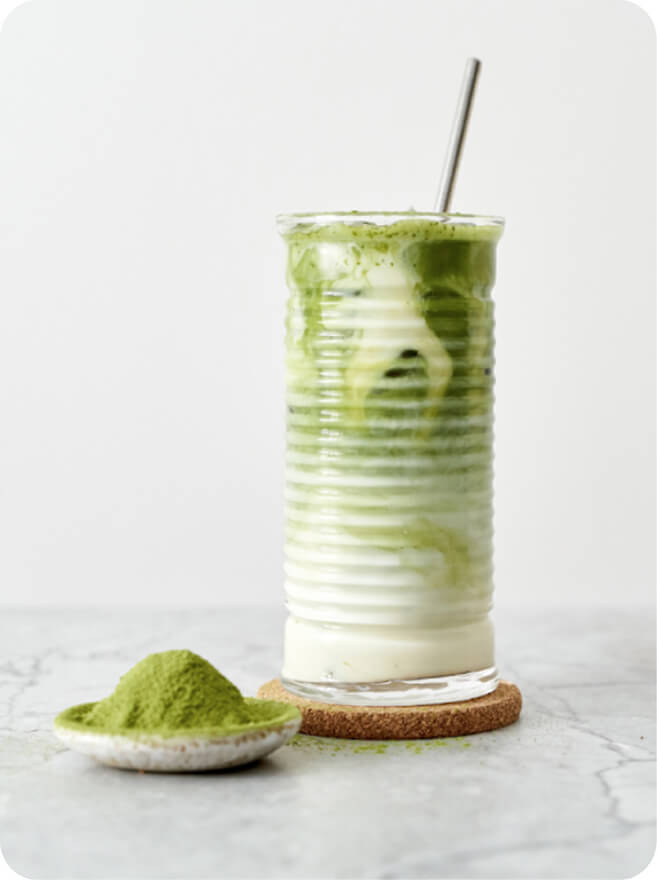
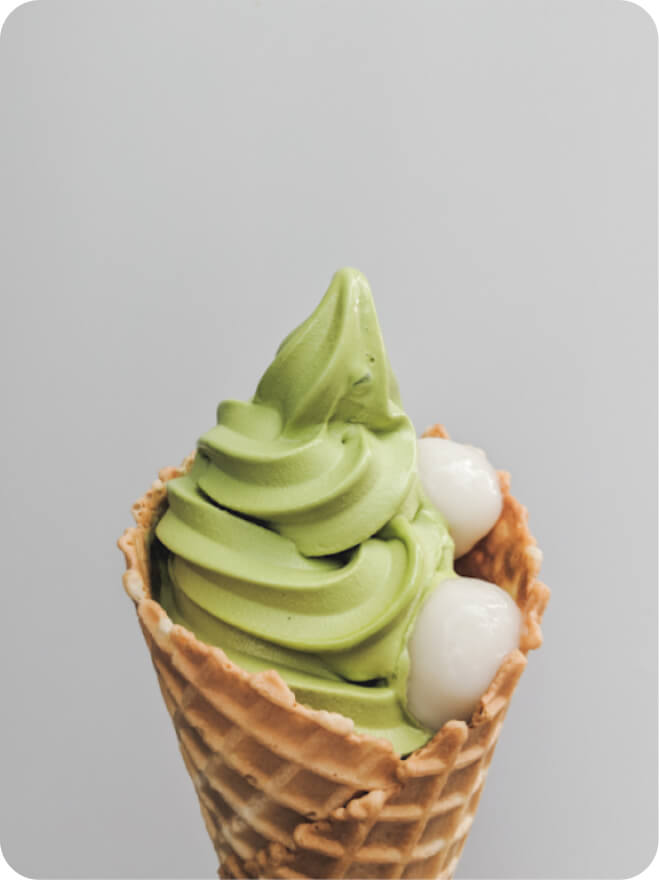
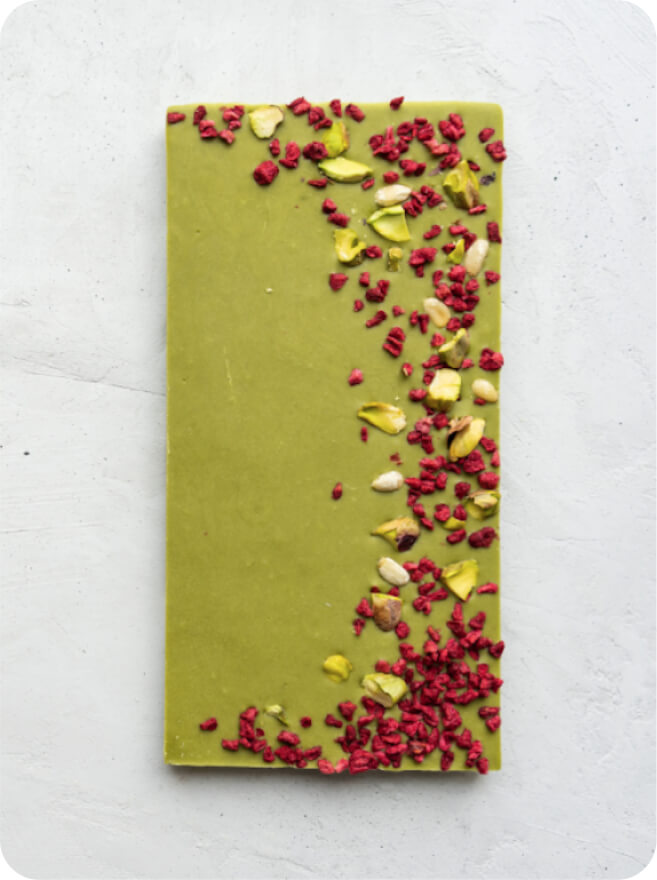
Explore our blog to learn how to introduce Japanese tea into your wellness routine.
Yes, it does contain caffeine, but its effects differ from those of traditional sources. The presence of L-theanine provides a balanced and sustained energy boost without the usual jitters associated with coffee.
It helps you stay alert and focused, making it a better option than coffee for a milder boost.
Yes, matcha can be beneficial for skincare. Matcha contains a high concentration of antioxidants, which help with skin anti-ageing. Some studies suggest they also help protect the skin from the harmful effects of UV radiation. The anti-inflammatory properties of matcha may help soothe irritated skin and reduce redness.
Use matcha-based skincare products or create DIY masks and treatments to incorporate matcha into your skincare routine. Remember, individual skin reactions vary, so it's recommended to patch-test any new skincare product or ingredient and consult a dermatologist if you have specific skin concerns or conditions.
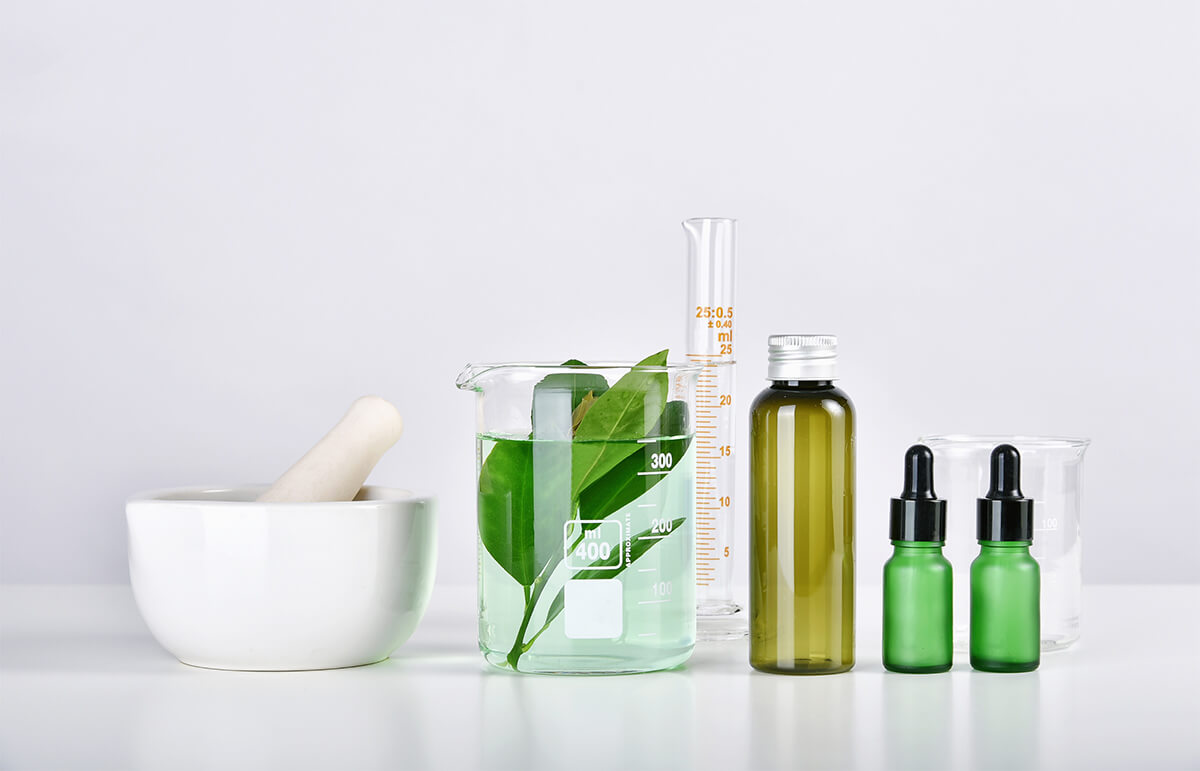
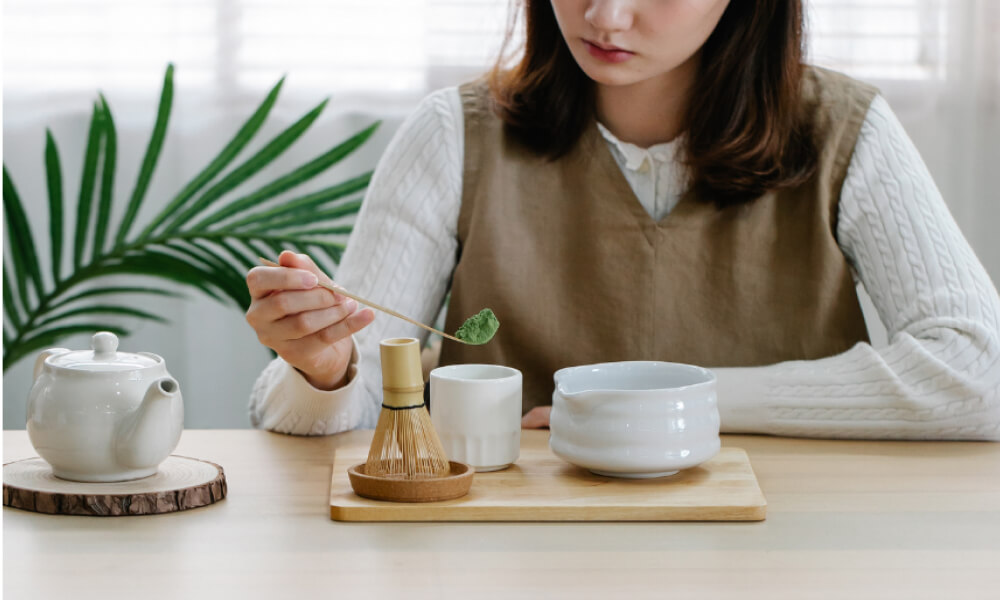

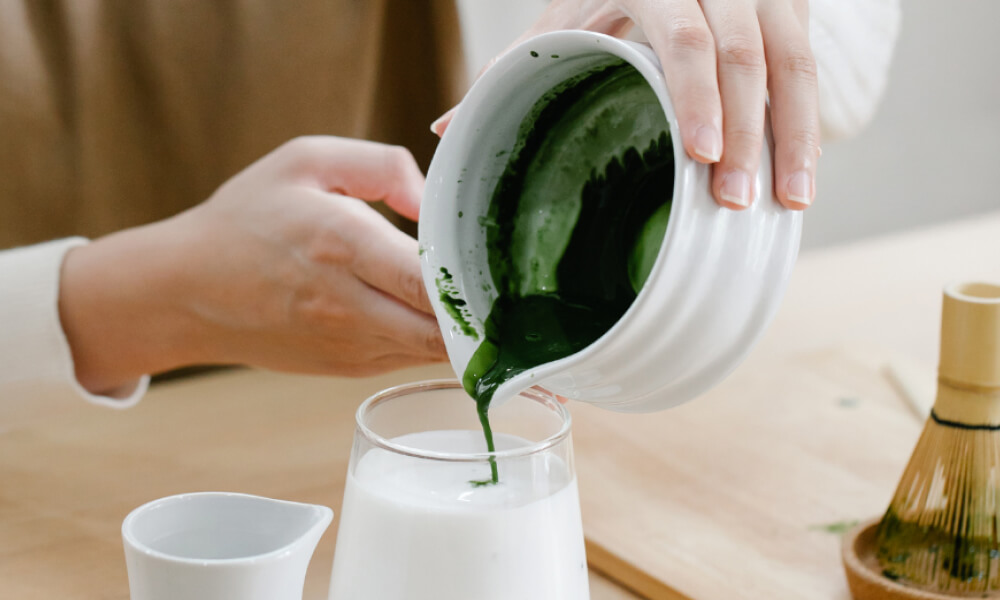
Preparing matcha is an art that goes beyond the conventional steeping of tea leaves. The process involves sifting the powder to remove lumps. The next step is to whisk it with hot water.
Traditionally, people use a ‘chasen’ bamboo whisk. However, nowadays more people use an electric one. This step is crucial, as it helps create a frothy, smooth beverage.
The water’s temperature and the powder’s quality can significantly impact the flavour and texture. The attention to detail and care in preparation contribute to the unique matcha experience.
Creating the perfect cup of matcha latte at home involves a few simple steps:

